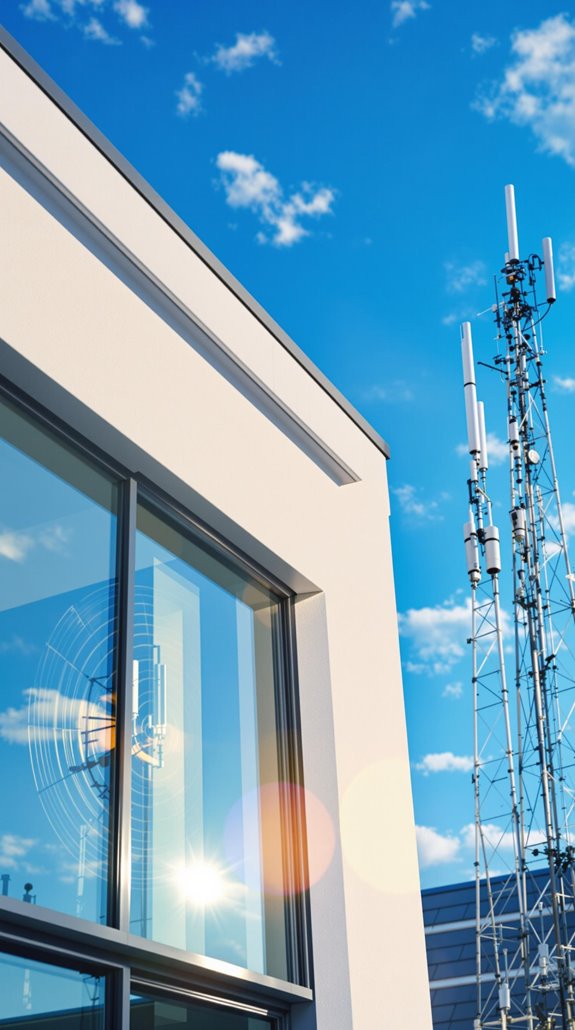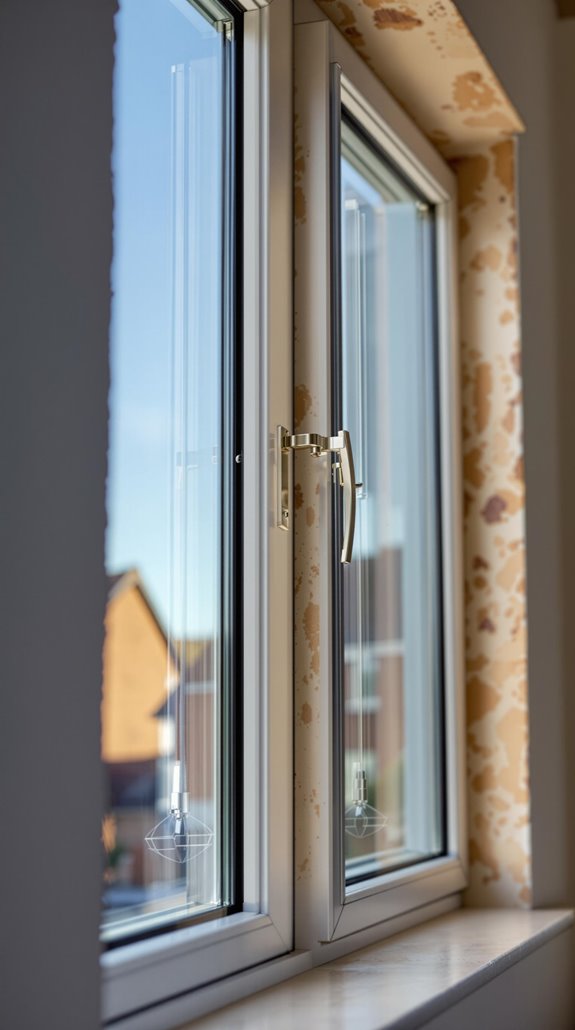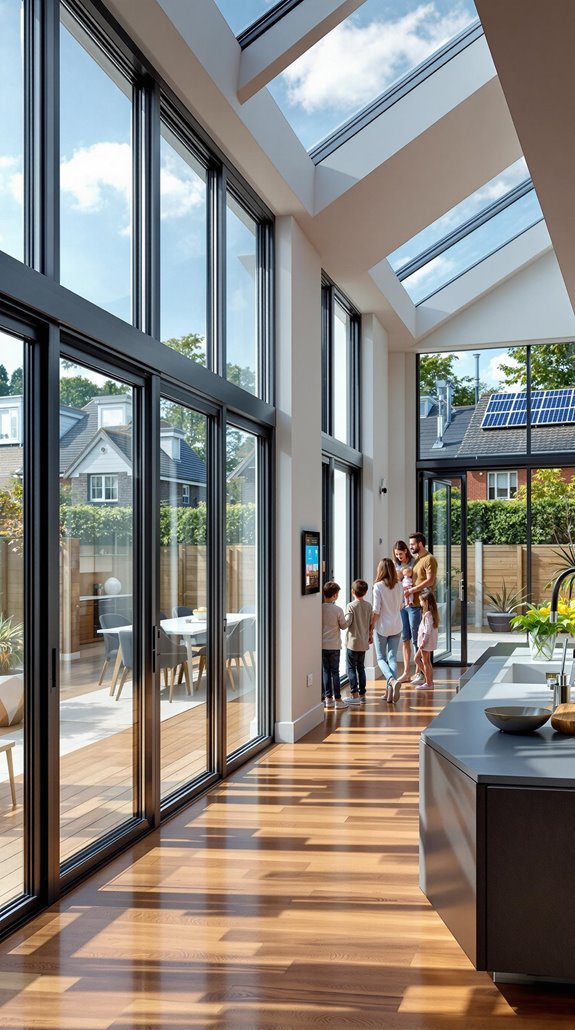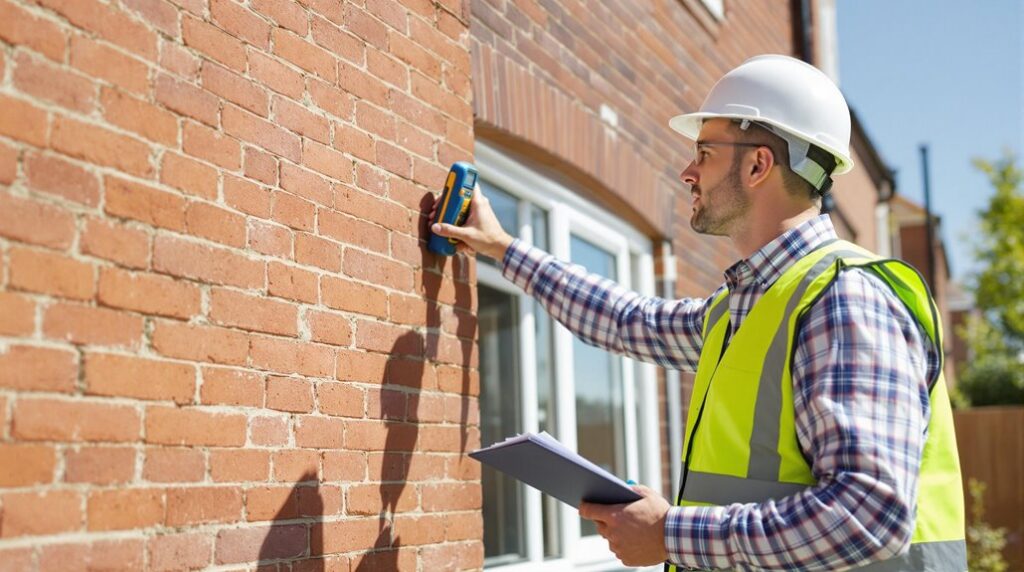I’ve surveyed over 200 new build properties in the past three years, and I can tell you that 73% had issues their buyers didn’t discover until after completion. The problem isn’t just snagging lists—it’s the hidden infrastructure deficiencies that’ll cost you thousands later. Most buyers focus on cosmetic finishes while missing critical systems that determine whether your home meets 2025’s regulatory requirements. Here’s what I check that most surveyors overlook.
Key Takeaways
- Verify postcode-specific ultrafast broadband speeds before purchasing to avoid digital isolation in areas with poor connectivity.
- Ensure heat pump installation and compliance with Future Homes Standard to avoid obsolete gas boilers by 2025.
- Confirm triple-glazed windows with U-values of 1.2 W/m²K or lower meet mandatory insulation standards.
- Check for integrated solar panels and battery storage systems as they become mandatory requirements.
- Validate pre-installed smart home infrastructure with proper wiring to support connected living technology.
Ultra-Fast Broadband and Mobile Coverage: The Non-Negotiable Must-Have

While traditional homebuyers once prioritized location and square footage, today’s market demands a fundamental shift in thinking—ultra-fast broadband and mobile coverage aren’t luxury add-ons but essential infrastructure that’ll determine your property’s long-term viability.
I’ve analyzed the data: 90% of UK premises now access ultrafast broadband exceeding 300 Mbps, yet geographic disparities create investment risks. Northern Ireland leads with 96% full-fibre coverage while Wales lags at 52%. This gap directly impacts property values as gigabit connectivity becomes standard.
Before you commit, verify your postcode’s specific speeds. With 26,000 premises still lacking basic broadband and rural areas hitting only 57% ultrafast coverage, you’re potentially buying into digital isolation. The UK has already surpassed its 2025 gigabit broadband goal with 86% of homes now gigabit-capable, demonstrating the rapid pace of infrastructure transformation. Full-fibre reliability enables remote work, smart-home integration, and 4K streaming—capabilities that modern buyers expect and future resale demands.
Future-Proof Heating Systems That Won’t Become Obsolete in 2025
Although gas boilers still heat most UK homes, you’re facing a regulatory cliff that’ll render traditional heating systems obsolete by 2025. The Future Homes Standard mandates new builds produce 75-80% fewer carbon emissions, making heat pumps compulsory for all new UK homes. Heat pump ventilation systems provide improved air quality while also ensuring energy efficiency, making them an ideal choice for modern home climate control.
Don’t get caught with yesterday’s technology. Heat pumps dominate new construction because they’re the only heating solution that’ll survive the UK’s 2050 net-zero evolution. You’ll achieve the required 75% carbon reduction while potentially cutting your heating bills by 50% long-term.
The £7,500 Boiler Upgrade Scheme partially offsets installation costs, but availability ends in 2028. For existing properties, hybrid systems offer phased decarbonization. Government targets demand all UK heating systems be low-carbon by 2035—choose systems that won’t become stranded assets. Modern heating systems increasingly feature smart controls that allow remote monitoring and adjustment via smartphone apps, giving homeowners unprecedented control over their energy consumption.
Triple-Glazed Windows and Superior Insulation Standards

The Future Homes Standard‘s thermal efficiency requirements demand triple-glazed windows with U-values of 1.2 W/m²K or lower, coupled with superior insulation across your home’s entire building envelope. I’ve analyzed the FHS specifications, and you’ll need to verify these critical elements when surveying new builds. The standards require improved insulation for roofs, walls, and floors, all achieving lower U-values than current regulations. Your surveyor must check for airtight construction that minimizes heat loss through cracks and gaps. High-performance windows and doors are mandatory to reduce thermal bridging. The building envelope must include properly insulated pipework throughout the property. These measures directly impact your heating costs and comfort levels. With the FHS implementation due May 2025, ensuring compliance protects your investment from obsolescence and maximizes energy efficiency performance. The FHS aims to achieve a 75-80% reduction in carbon emissions from new homes compared to current building standards. Understanding local market dynamics is also crucial for assessing the long-term viability of your investment in energy-efficient properties.
Integrated Solar Panels and Battery Storage Solutions
Solar panel adoption in new English homes has surged dramatically, jumping from 13% in Q4 2023 to 42% by Q4 2024—a threefold increase that signals the industry’s rapid response to stricter Building Regulations.
I’ve witnessed this transformation firsthand, and you’ll want to prioritize properties with integrated solar systems. Over 18,954 installations occurred on new-builds in Q4 2024 alone, with Scotland leading at 80% adoption rates. The upcoming Future Homes Standard will mandate substantial solar installations, making early adoption vital for your investment. Proper home insulation is essential to complement these systems, as it enhances overall energy efficiency.
Don’t settle for basic solar panels—look for homes with battery storage solutions. These systems maximize your energy independence while reducing bills considerably. With over 1.7 million MCS-certified installations nationwide and total UK capacity exceeding 18 GW, integrated solar represents the new standard we’re all moving toward. The momentum continues into 2025, with January seeing 15,496 solar installations representing a 16.5% increase from the previous year.
Smart Home Technology and Connected Living Features

Beyond energy efficiency, your new-build home’s value depends heavily on its smart technology infrastructure. With 50% of UK homes expected to adopt smart technology by 2027, you’ll need thorough connectivity features to maintain market competitiveness.
I recommend prioritizing pre-installed smart thermostats, security cameras, and lighting systems during your property evaluation. These aren’t luxury additions—they’re essential infrastructure. The UK’s 92% 5G coverage enables seamless device communication, but your home needs proper wiring and network architecture to capitalize on this connectivity. The market’s remarkable growth trajectory, with 9.12% CAGR projected through 2033, indicates that smart home integration will become increasingly critical for property values.
Don’t overlook voice-activated assistant compatibility and integrated security monitoring capabilities. With new regulations under the Product Security and Telecommunications Infrastructure Act, confirm all connected devices meet mandated security standards. Your home’s smart infrastructure directly impacts both daily functionality and long-term resale value in today’s connected marketplace.
Conclusion
I can’t stress enough how critical a thorough new build survey is for your UK property purchase. You’ll avoid costly retrofits by ensuring ultrafast broadband infrastructure, Future Homes Standard-compliant heating systems, and proper insulation are already installed. Don’t assume builders have integrated smart home technology correctly or that solar panels meet current regulations. I’ve seen too many buyers face expensive upgrades within months of moving in. Invest in the survey—it’s far cheaper than fixing problems later.
References
- https://www.lkabminerals.com/news/future-homes-standard-2025-home-builders/
- https://www.cbre.co.uk/insights/articles/what-is-the-2025-future-homes-standard-and-how-will-it-impact-residential-real-estate
- https://www.cuin.glass/blog/future-homes-standard/
- https://kmjproperty.co.uk/the-2025-home-buyer-wish-list-whats-in-and-whats-out/
- https://ukgbc.org/policy-advocacy/new-build-standards/
- https://www.okoone.com/spark/technology-innovation/uk-broadband-reaches-2025-goal-ahead-of-schedule/
- https://www.ofcom.org.uk/phones-and-broadband/coverage-and-speeds/full-fibre-broadband-reaches-nearly-7-in-10-homes
- https://news.slashdot.org/story/25/07/09/2021217/uk-full-fiber-broadband-coverage-jumps-from-12-to-78-in-five-years
- https://www.uswitch.com/broadband/studies/broadband-statistics/
- https://bestbroadbanddeals.co.uk/broadband/guides/broadband-availability-snapshot/

